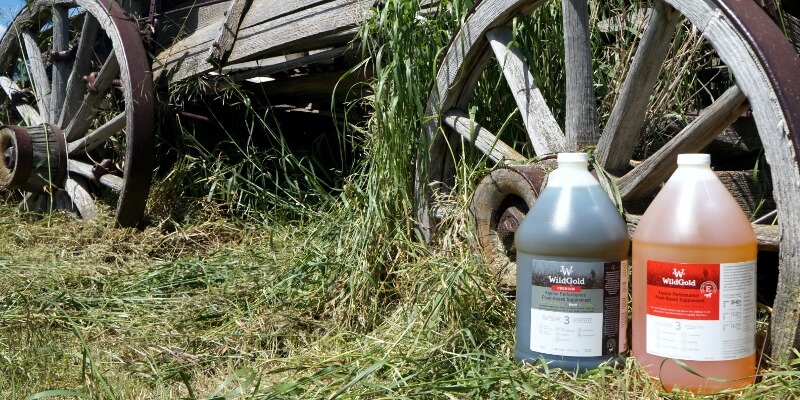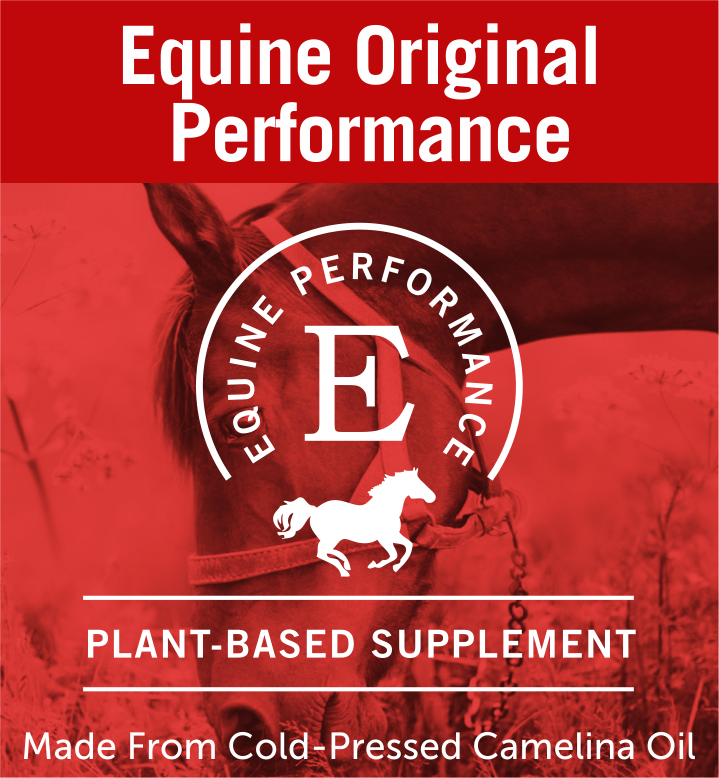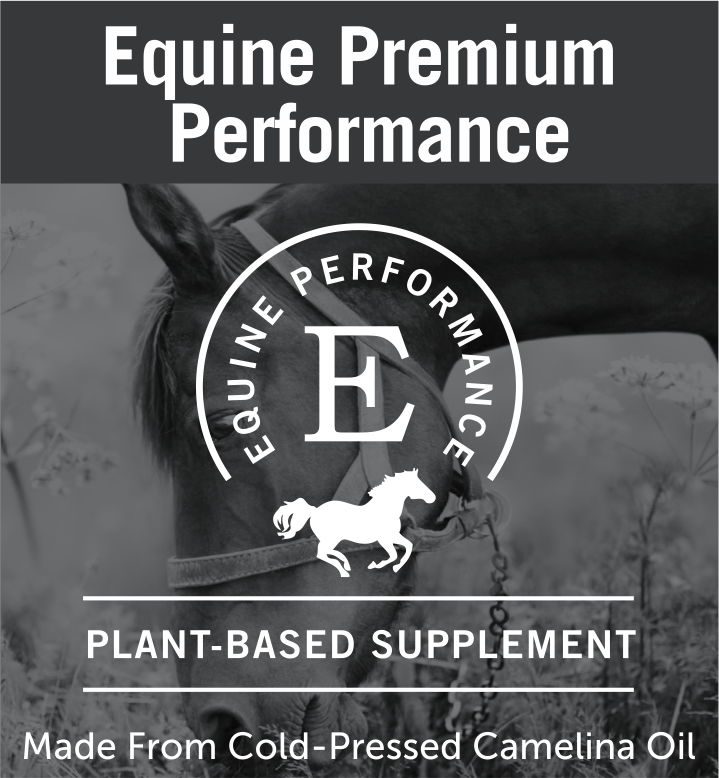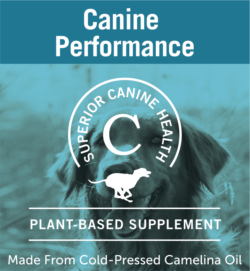 We can look back on our previous article on the section of Omega Fats as Energy (insert previous article hyperlink here). Fats are packed with 2x as much energy than carbohydrates or protein. Fat creates the link for the brain to feel satisfied about hunger, allowing to feed less bulk of food yet have satisfaction. Fats are essential for the most important vitamins to be absorbed into the body. Fats aid proper metabolism and organ function. The list can go on and on. Today we are going to talk about more specifics of recovery, performance, and individual benefits for horses and dogs.
We can look back on our previous article on the section of Omega Fats as Energy (insert previous article hyperlink here). Fats are packed with 2x as much energy than carbohydrates or protein. Fat creates the link for the brain to feel satisfied about hunger, allowing to feed less bulk of food yet have satisfaction. Fats are essential for the most important vitamins to be absorbed into the body. Fats aid proper metabolism and organ function. The list can go on and on. Today we are going to talk about more specifics of recovery, performance, and individual benefits for horses and dogs.
Omega’s Recovery and Performance
Here, recovery means after strenuous exercise, but often these principles are apart of post-injury as well. The key factors or strategies of recovery programs include pre-loading (pre-exercise), refueling (post-exercise), maintenance of repair and adaptation, rehydration, and reduce inflammation and muscle soreness.
Omega 3’s is essential in the strategy of reducing inflammation and muscle soreness, but also play a role in pre-loading and refueling. The key for reducing inflammation (swelling) and muscle soreness is antioxidants, anti-inflammatory foods or supplements and Omega-3s. Antioxidants, such as Vitamin E help remove the bad products that comes from the damage in the body from exercise/activity, and fats are needed for absorption of Vitamin E as well. Anti-inflammatory foods or supplements help reduce the amount of “hot” or “toxic” environment created by the damaging stresses of the work just completed.
Omega-3s are a part of Anti-inflammatory foods and supplements, but also stand alone as energy and nutrient support. Omega-3s break down into very tiny pieces that are the components of the anti-inflammatory system (see (insert previous article hyperlink here) for more details on Omegas and inflammation). After injury, or exercise there is always some amount of inflammation that is naturally occurring in our bodies. If we have a system that lacks omega-3s and the anti-inflammatory components, our bodies will be prone to not only staying in an inflammatory state but increasing the inflammation in the body. Too much inflammation can wreak havoc to our bodies and can even begin to change DNA (the code that makes our body what it is). Our society, including our dog’s and horses, has a heavy increase in inflammatory diseases due to the lack of omega 3/anti-inflammatory balance in our diets.
The less inflammation and the greater control of inflammation leads to increased performance but also increased recovery to keep performance high day-to-day and competition-to-competition. Omega’s and fat diets are beneficial to most, if not all mammals, but let’s look at benefits for horses and dogs.
Horses Benefit from Omega-3s and Fat
When thinking about horses and the benefits of a high fat, particularly high omega 3’s, there are a few key things:
1) High energy with low “heat”
In horses, especially those “hard-keepers” or “low-energy/lazy”, we are often in the dilemma of feeding the horse extra calories and added carbohydrates and sugars for that extra umpf. However, with this diet we run the risk of some major health issues or attitude changes. The health issues are often insulin resistance (IR) or equine metabolic syndrome (EMS). These are basically equine diabetes. Laminitis can be the most disastrous sequala of these issues. We have seen a rise in low “NSC”, non-structured carbohydrates (or sugars), for grains because we are having more awareness of IR, EMS, and the risks of laminitis. One thing a lot of these “low NSC” diets have in common is a higher fat content, often Omega-6s. There are even supplements that are directly fat supplements. For these diets, omega-3’s need to be added in order to keep balance between the two great Omegas.
For these same “hard-keepers” horses we need to look into added calories and energy, but we want to stay away from the sugars also because of the type of energy sugars and carbs that is exhibited in horses. This type of energy is “heat”, the “hot” horse. For horses that are already naturally more “hot”, reactive, sensitive, carbohydrates and sugar diets are a definite no-no. These horses excel on added fat diets for their extra calories. Fat is a slow long burning energy thus creates little “heat”. Because of this we refer to it as a “cool” energy. Not only do “hard-keepers” get to benefit from omega’s and added calories from fat, they can keep their head on level ground.
“Low-energy/Lazy” horses that need that extra boost of energy can benefit from fat just the same! We do not want to take away the level-headedness of these horses and replace it with a more sensitive and reactive horse. We want to fuel these horses without changing their great minds all while lowering the risk of IR, EMS, and laminitis. Fat diets balanced with Omegas is often the golden ticket.
Higher calories give more energy, low “heat” increases concentration ability. These two benefits are essential for the performance horse.
2) Balance the use of hay instead of fresh grass (naturally packed with omega 3’s)
Fresh grasses and plants have a larger source of Omega-3s than hay. During the drying process, different cuts, and storage times Omega-3s in grasses can be very little to non-existent. Horses today need large amounts of grass hays in order to keep their digestive system in working order when we have limited access to free-range and natural-pasture feeding. We as owners have the ability to help recreate balance by supplementing Omega-3s back into the diet.
3) Reduce inflammation for better recovery and day-to-day body health
Reducing inflammation is exactly what we talked about in the previous section on recovery. Omega-3s role as an anti-inflammatory controller allows the body to have balance of inflammation and healing.
Now, dogs are very similar! But they have some other key things to look at.
Dogs Benefit from Omegas and Fats
Dogs— both pet, athlete, and working—all benefit from Omega 3 balance in the diet. Now if you are pet owner reading this, performance is for you dog as well! The pet dog’s performance is ability to comfortably go on walks and jump on and off the couch and to be apart of your everyday life no matter the ups, downs, or immediate changes that can occur. 
Fats and Omega-3’s in a dog’s diet can help with reduced risk of developing diabetes. Dogs can get type-2 diabetes just like in humans and much similar to the horses IR or EMS. Some commercial dog foods have very high carbohydrates as the primary source of energy in the diet. This is regardless if grain-free or containing-grains. This high carbohydrate load can lead to increase glucose in the blood which can develop into increased cholesterol in the blood. Obesity is very difficult to manage or prevent on a high carbohydrate diet. Fats especially good fats, such as omega-3s can help balance a diet between protein and carbs. The pet can feel less hungry after a higher fat diet. Carbohydrates can often be empty and fuel hunger more often throughout the day. Having that begging pet by the food bowl is difficult not to give in! We can feed less to our dogs yet maintain satisfaction with fats. Feeding less can also be essential for our deep chested-bloat prone breed of dogs. We still do not have definitive cause of Bloat in dogs but having a smaller meal can be helpful at preventing this dangerous disease.
But don’t forget about the balance! Omega-6s are heavy in our dog’s commercial dog foods. So, adding Omega-3s as a topper is essential for balance.
In regard to performance specifically, often times working and sport dogs can be lacking in calories for their day-to-day training and work. There are diets that have higher calories per cup, but often large amounts of food need to be fed in order to meet the demand. Feeding fats in the diet can reduce the amount of food fed be drastically boost the calories the dog is taking in. To add to it all, these fat calories are long energy. Meaning, those herding dogs, search and rescue, police K9,s etc. that work for long periods of time covering large amounts of ground some days will use this fat energy. This energy will always be there for them after their glucose load starts to diminish. Now as these athletes work hard, they increase the wear and tear on their bodies creating the dreaded inflammation. Omega-3s as a major fat source can be the double edge sword to combat tiredness and inflammation.
Omega-3s ability to reduce inflammation is key for our ever-growing incident of dogs and allergies. The pro-inflammatory diets of our society and ever-increasing environmental intrusions (chemicals, poor air quality, etc.) are setting up our dog’s to have increasing allergies. Now it is not fully understood as to why there is an increase in allergies and that is a debate in itself. So, what we can focus on is helping our dogs today. If they are less allergic, they can perform better.
So, come to think of it, horse and dog’s have very similar benefits to fats and Omega’s. But of course, that’s just how fats and Omega-3s work. Whether a pet, trail partner, working or performance animal, having fat in the diet and balance of Omega-3s will aid energy and performance!
Stay tuned for our next article where we will look at two different real cases of horses and dogs and how they benefit from adding Omega-3s and fats into their diet!




